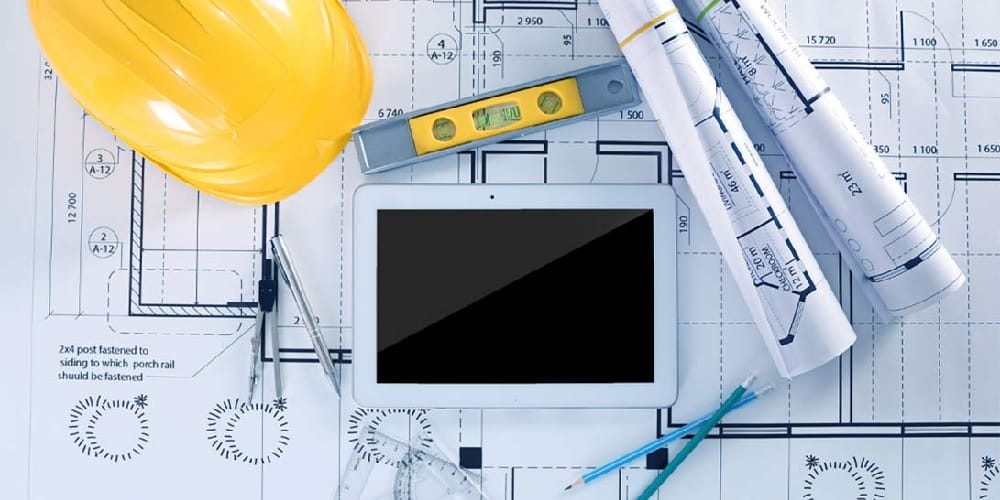Despite many technological advances that have revolutionized the construction industry, many estimators are stuck in the past, preparing bids the same way they’ve been doing it for years: relying on blueprint takeoffs. Modern software focused specifically on producing accurate takeoff calculations and cost estimates make the process exponentially more efficient and accurate. Contractors and engineers who continue to stick to outdated methods waste time and open themselves up for errors.
The typical process that most contractors and construction engineers use to perform takeoffs is inefficient. It requires putting together an Excel sheet and manually measuring areas and dimensions from CAD files or paper blueprints and then entering them correctly into the calculation. When things inevitably change in the project's design, these changes do not automatically follow through to the spreadsheets. Checking the calculations can be a tiresome task for senior project managers, whose time could be better spent targeting clients or performing higher-end tasks.
Old-fashioned blueprint takeoffs can certainly be accurate, especially with an experienced estimator handling the calculation, but it is an extremely time-consuming process. Blueprint takeoffs have dozens of steps, including hand calculations, scaled measurements, checking, revisions, and preparing a cost estimate. Ditching printed plans for cloud-based takeoff software like ProEst should be done by construction companies that want to keep pace with their competitors. Modern estimating software can cut the time to prepare a bid in half. Over the course of a full year, that saved time could amount to dozens of extra opportunities to pursue new projects or reallocate resources to a more crucial business operation.

ProEst allows contractors to eliminate typical steps in the blueprint takeoff and cost estimate process because the work can be done directly from the digital blueprints. Blueprint takeoffs eliminate inefficiencies because the calculations follow and change to match every update. Without this software, contractors are forced to track changes separately to their blueprints and chase them through the takeoff calculations in an Excel spreadsheet.
Using ProEst’s digital blueprint takeoff capabilities is faster and more efficient than traditional methods and eliminates errors. Reporting becomes much easier because everything updates quickly and data integrates with other business tools. All this makes for a more efficient estimating team and will lead to contractors being able to produce a higher volume of bids whose accuracy they can feel confident in. Takeoffs and cost estimates are one of the most important things that contractors need to get right, and ProEst can help make that happen.
Contractors need to remember that their profits are made in the estimating process, where they can rely on their firm’s talents and expertise to come up with the best way to get things done. That edge is lost when errors are made in the takeoff process. Making a mistake on a takeoff won’t affect whether a job can be built successfully, but it will impact the bottom line. Writing for Construction Executive, Phillip Ogilby breaks it down: “Software can help automate the time-consuming takeoff and estimating processes traditionally done by hand, and at the same time significantly increase accuracy. This reduces the likelihood of mistakes and missing items when putting together estimates. The more accurate an estimate, the more securely the profit can be baked in.”
As an example, custom home builder Crawford Construction of Lexington, Kentucky, adopted ProEst’s software and saw results instantly. They reduced their takeoff time by 50%, got more accurate cost estimates (thanks to the program’s accessible bid history), and cut overhead costs by shifting staff off the estimating team to more critical roles. Owner Mac Crawford is a believer: “We create estimates about 50% faster with ProEst than we did with Excel, especially when we use the digitizer.”
It’s time for the construction industry to quit dragging their feet and improve their processes with modern software. In a KPMG survey of leaders in the construction industry in 2016, less than 25% of respondents were using analytics and big data to track and improve their bids, while only 20% felt they were making changes to their business model to adopt cutting-edge technology and practices. The industry must move forward, but many contractors are hesitant to make the investment of time and money to change their methods. This is a shortsighted view that will ultimately cost firms millions of dollars in lost revenue. Improving the takeoff process and improving profit margins will lead to long-term cost reduction for large-scale construction projects.

